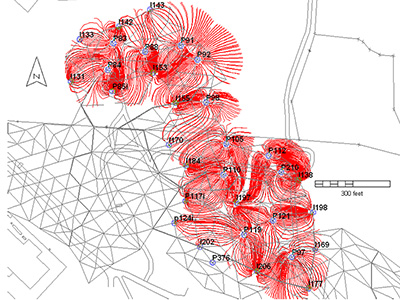Case Study
US operations enlist computer modelling for groundwater restoration

Three-dimensional computer modelling has helped Cameco Resources’ Crow Butte operation slash groundwater restoration times.
Bob Tiensvold, restoration manager for the Nebraska-based in situ mine, estimates that restoration which would have taken approximately five years, in the older and smaller mine units, can now be completed in less than half that time.
Efficiencies are even greater in the newer, larger mine units where restoration that once required 50 pore volumes of water and 15 years should now be completed with six to 12 pore volumes in two and a half years.
“Computer modelling has helped identify any overlap as well as any gaps in the way we recirculate water for restoration,” says Tiensvold. “Making the process more efficient reduces the amount of water and time required which, in turn, reduces restoration costs.”
Crow Butte’s in situ mining process involves the circulation of solutions through ore-bearing formations to dissolve uranium and pump it to the surface for recovery. This approach results in minimal surface disturbance and produces no waste rock or mill tailings.
Once mining is complete, restoration requires recirculation of water through the underground network with a series of pumps and injectors. Using the model-based restoration plan (MBRP) allows a hydrogeologist to identify the most efficient underground sweep with the fewest pore volumes. A pore volume represents the amount of water required to fill the space between the sand grains of an aquifer.
“If you have water from different pumps overlapping, it’s like treating the same area twice,” says Tiensvold. “On the other side of the spectrum, we could be missing certain spots if we don’t have certain pumps turned on. Modelling allows us to get the best bang for our buck in terms of pore volumes.”
To complement the efforts at Crow Butte, Cameco Resources’ neighbouring Smith Ranch-Highland operation in Wyoming is leading research to improve the groundwater restoration process. One of the objectives is to provide a clear template for regulators and miners to determine when restoration efforts merit the release of surety bonds held against mined aquifers.
The research encompasses laboratory work, computer modelling and field experiments. The scope of collaboration between Cameco and independent researchers is unprecedented in the US uranium industry. Participating agencies include Los Alamos National Laboratory, the United States Geological Survey, the Canadian Light Source and several universities.
Results of the research are expected to be released in peer-reviewed, scientific publications.
